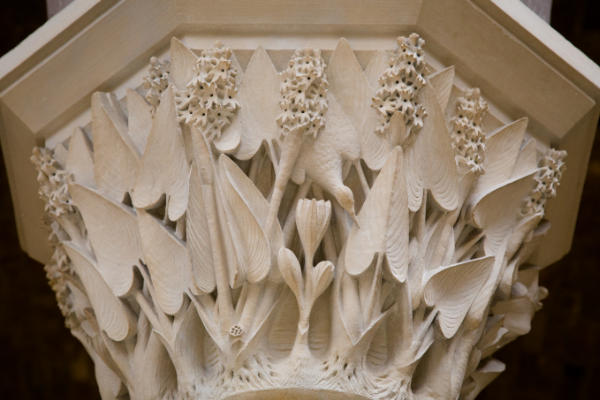Images of climate innovation
Symbiosis: Science, Art and Nature
This beautiful carving by Irish sculptor John O'Shea shows how the Victorians used art to teach science and celebrate nature. At the University of Birmingham, we have been working out how to rebuild the link between science and art in natural history museums around the world. Working with museums, we have shown how bringing science and art together can reach new audiences and help them understand and face climate change.

Researchers at the University of Birmingham and Mount Allison University in Canada have been studying the role of the arts in natural history museums.
In the 1850s, John Ruskin and the Pre-Raphaelites worked alongside leading scientists and architects in designing the Oxford University Museum of Natural History, which soon became a model for natural history museums around the world.
These museums pioneered the use of architecture, sculpture, and painting to communicate science and celebrate nature. By studying these foundational collaborations between scientists and artists, and working with museums themselves on new art projects, we have shown how natural history museums can bring art and science together to confront the environmental crisis.
With climate change and the loss of habitats and ecosystems around the world, the role of museums in highlighting the condition of the natural world has never been more vital. At this crucial moment, the arts have a key role to play in attracting wider audiences to museums, in inspiring us to enjoy and value nature, and in posing questions that science cannot answer alone.
Through art projects like Visions of Nature at Oxford University Museum, natural history museums are helping people to grasp for themselves the implications of climate change and ecological destruction, and inspiring them to care for nature and embrace more sustainable ways of living. To promote and develop this new alliance between science and the arts, we have joined with the natural history museums in Oxford, Berlin, and Vienna and the Royal Ontario Museum in Toronto to found a network called Symbiosis.
Our online conference last year was attended by over 200 delegates from 27 countries, providing a forum for museums, scientists and artists from across the world, including in middle- and low-income countries, to work together to find new ways of teaching people about the environmental crisis and inspiring them to help restore the health of our world.
Entrant: John Holmes , University of Birmingham
Copyright: Oxford University Museum of Natural History, photograph: Scott Billings
Funding: Social Sciences and Humanities Research Council of Canada (SSHRC)
Collaborators: Janine Rogers (Mount Allison University); Paul Smith (Oxford University Museum of Natural History); Stefanie Jovanovic-Kruspel (Naturhistorisches Museum); Anita Hermannstaedter (Museum fur Naturkunde Berlin); Sascha Priewe (Royal Ontario Museum);
Links
https://www.birmingham.ac.uk/research/symbiosis/book-of-nature.aspx
https://arthistoriography.files.wordpress.com/2020/05/holmes-and-smith.pdf
https://www.birmingham.ac.uk/research/symbiosis/visions-of-nature.aspx
https://www.birmingham.ac.uk/research/symbiosis/index.aspx
https://www.youtube.com/playlist?list=PL6fQNdWR1msAwNc9rr-_BdzDlYUXjEL3t